Active 1793–1956 Branch Army | ||
 | ||
191 2 lima class 55 deltic fife and forfar yeomanry br blue
The Fife and Forfar Yeomanry (FFY) was an Armoured Yeomanry Regiment of the British Territorial Army from 1793 to 1956, when it was amalgamated with the Scottish Horse.
Contents
- 191 2 lima class 55 deltic fife and forfar yeomanry br blue
- The Fife and Forfar Light Horse
- 20th Company of The Imperial Yeomanry
- The Fife and Forfar Imperial Yeomanry
- World War I
- 11st Fife and Forfar Yeomanry
- 21st Fife and Forfar Yeomanry
- 31st Fife and Forfar Yeomanry
- Between the wars
- 1st Fife and Forfar Yeomanry
- 2nd Fife and Forfar Yeomanry
- 1947 1956
- Memorials
- Battle honours
- Guidons
- FFY Cap Badge
- Warrant Officers
- Head Dress
- Stable Belt Colours
- Regimental Music
- Affiliated Regiments and Formations
- Alliances
- The Fife and Forfar Yeomanry Locomotive
- References
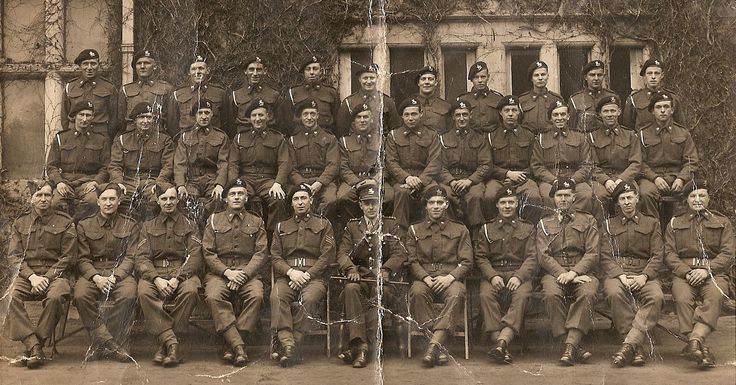
It was raised to counter the threat of invasion by France in the late 18th Century but first saw service in the Boer War. The Regiment saw heavy fighting in both the Great War and World War II.
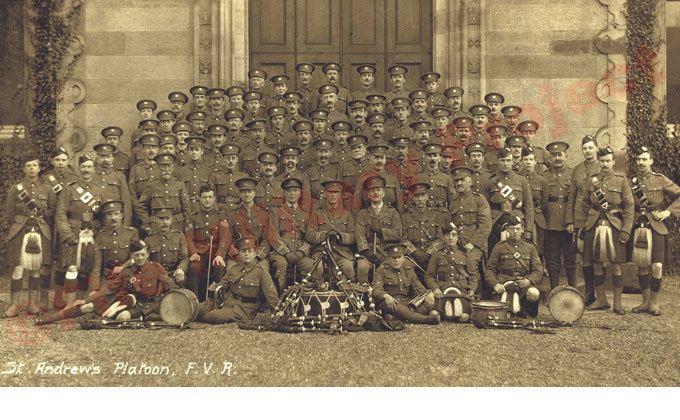
Today, the combined regiments are perpetuated by "C" (FFY/SH) Squadron of The Scottish and North Irish Yeomanry based in Cupar in Fife.
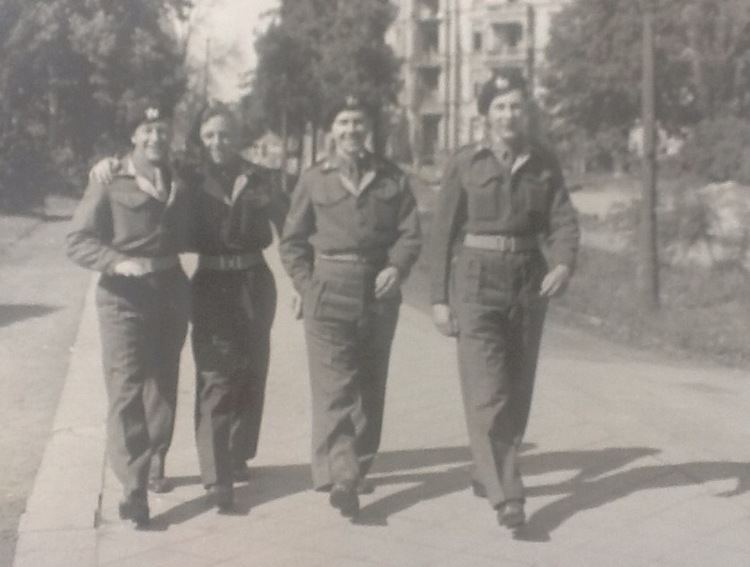
The Fife and Forfar Light Horse
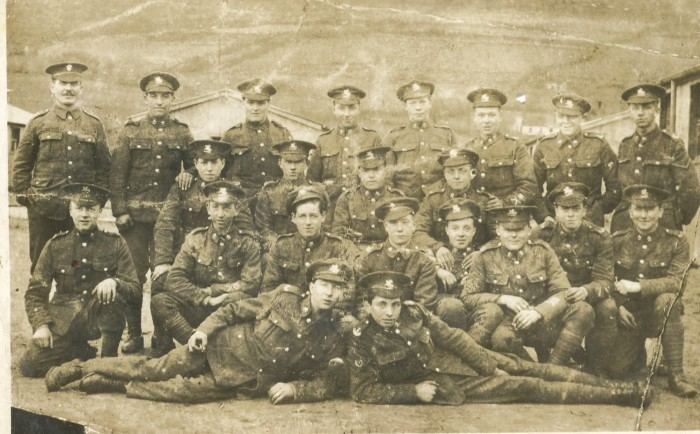
Raised in 1793 but it was not until 1875 when they attached themselves to the Fife Light Horse.
Raised in 1798 was renamed The Fife Yeomanry Cavalry soon after, it name again gaining the designation “Royal” to its title in 1814 after receiving the thanks of both Houses of Parliament for its services.
In 1860 "The Royal Fife Yeomanry Cavalry" was re-roled as "Fifeshire Mounted Rifle Volunteers" (FMRV) were under the command of the Earl of Rosslyn.
The FMRV were re-roled once more as Light Horse in 1870 and 1875 The Forfar Troop were formally attached forming The Fife and Forfar Light Horse.
20th Company of The Imperial Yeomanry
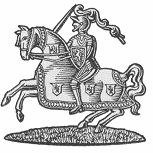
At the start of the Boer War, volunteers from the Fife and Forfar Light Horse whose regiment could not be sent overseas volunteered to form The 20th (Fife and Forfar) Company Imperial Yeomanry for service in South Africa.
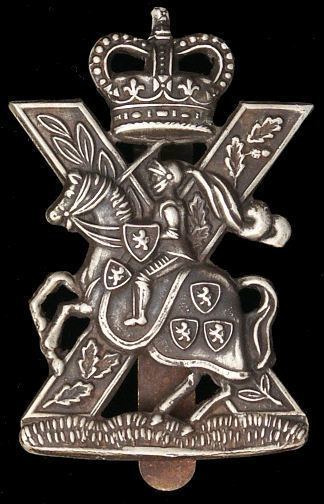
The Company served in South Africa from early 1900 and during it campaign received a total of 500 officers and men from the Fife and Forfar Light Horse.
The Fife and Forfar Imperial Yeomanry
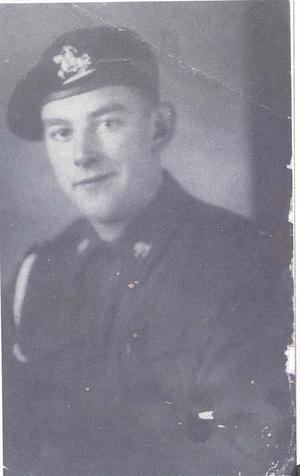
In May 1901, the Fifeshire Volunteer Light Horse and the Forfarshire Volunteer Light Horse were amalgamated, and converted into a regiment of Imperial Yeomanry, to be designated the Fife and Forfar Imperial Yeomanry.
The "Imperial" was dropped from the title on the formation of the Territorial Force in 1908.
World War I
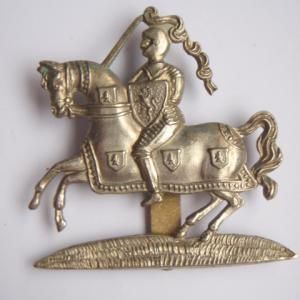
In accordance with the Territorial and Reserve Forces Act 1907 (7 Edw. 7, c.9), which brought the Territorial Force into being, the TF was intended to be a home defence force for service during wartime and members could not be compelled to serve outside the country. However, on the outbreak of war on 4 August 1914, many members volunteered for Imperial Service. Therefore, TF units were split in August and September 1914 into 1st Line (liable for overseas service) and 2nd Line (home service for those unable or unwilling to serve overseas) units. Later, a 3rd Line was formed to act as a reserve, providing trained replacements for the 1st and 2nd Line regiments.
1/1st Fife and Forfar Yeomanry
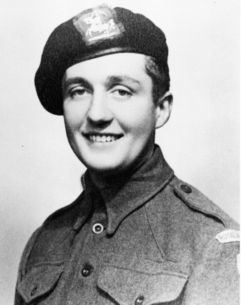
They were dismounted and eventually became The 14th (FFY) Battalion, of the Black Watch As part of the 74th (Yeomanry) Division they served in Egypt and Palestine in 1917 and 1918 before being moving to France in 1918.
2/1st Fife and Forfar Yeomanry
The 2nd Line regiment was formed in September 1914 and in January 1915 was assigned to the 2/1st Highland Mounted Brigade. On 31 March 1916, the remaining Mounted Brigades were ordered to be numbered in a single sequence; the brigade was numbered as 1st Mounted Brigade and joined the 1st Mounted Division in Norfolk. In July 1916, the 1st Mounted Division was reorganised as the 1st cyclist Division and the regiment was transferred as a mounted unit to the 2nd Mounted Brigade in the new 1st Mounted Division (the former 3rd Mounted Division) in the Brentwood area.
In November 1916, the regiment was converted to a cyclist unit in 6th Cyclist Brigade at Ashington in Northumberland. By July 1917, it was at Acklington and it remained there until early 1918 when it went to Ireland with the 6th Cyclist Brigade. It was stationed at The Curragh until the end of the war.
3/1st Fife and Forfar Yeomanry
The 3rd Line regiment was formed in 1915; that summer, it was affiliated to a Reserve Cavalry Regiment at Aldershot. In June 1916, it was at Perth. The regiment was disbanded in early 1917 with personnel transferring to the 2nd Line or to the 4th (Reserve) Battalion of the Black Watch at Ripon.
Between the wars
On 7 February 1920, the Regiment was reconstituted in the Territorial Army with HQ still at Kirkcaldy. Following the experience of the war, it was decided that only the fourteen most senior yeomanry regiments would be retained as horsed cavalry, with the rest being transferred to other roles. As a result, on 6 January 1921, the Regiment was one of eight converted and reduced to 2nd (Fife and Forfar) Armoured Car Company, Tank Corps, later renumbered as 20th (Fife and Forfar) Armoured Car Company, Royal Tank Corps. On 30 April 1939, it was transferred to the Royal Armoured Corps.
By 1939, it had become clear that a new European war was likely to break out, and the doubling of the Territorial Army was authorised, with each unit forming a duplicate. The Lothians were expanded to an armoured regiment in August 1939 as the 1st Fife and Forfar Yeomanry and formed a duplicate 2nd Fife and Forfar Yeomanry in the same month.
1st Fife and Forfar Yeomanry
51st (Highland) Infantry Division
Dunkirk
2nd Fife and Forfar Yeomanry
1947-1956
When the Territorial Army was re-formed in May 1947, the FFY resumed its pre-war role as an Armoured Car Regiment.
On 1 November 1956, the Fife and Forfar Yeomanry/Scottish Horse was formed by the amalgamation of the FFY with The Scottish Horse - the Regiments, which had neighbouring recruiting areas, were in the Royal Armoured Corps. The Fife and Forfar retained two squadrons and the brass band under the new structure, but a new combined cap badge was designed and the new regiment would wear the Atholl Bonnet of The Scottish Horse as their head dress.
Memorials
The Scottish National War Memorial, which was built after a proposal in 1917 by the Duke of Atholl in Edinburgh Castle, contains a memorial and book of remembrance to all Scottish Regiments.
There is a carved stone plaque dedicated to 'To the memory of all ranks - The Fife Light Horse and The Fife and Forfar Yeomanry 1860–1918' inside the ruined church building at Tulliallan Old Churchyard (also known as Woodlea Old Cemetery) Kincardine on Forth. See The Scottish War Memorial Project external link below.
A Fife and Forfar Memorial Font, together with a book of remembrance, is housed at Cupar Old Parish Church. The font was dedicated on 6 May 1951.
Another memorial was gifted by The Regiment to the Parish Church of Forfar (Old) on Sunday 28 October 1951.
On 7 September 2001, the South-of the Border Group of the Regimental Association dedicated a plaque, tree and bench in Yeomanry Avenue at the National Memorial Arboretum, Alrewas near Lichfield, to those of the 1st and 2nd FFY who gave their lives 1939-1945.
Battle honours
The battle honours of the Fife and Forfar Yeomanry are displayed on the guidon which was laid up at Cupar Old Parish Church when the regiment was amalgamated. After amalgamation, the battle honours were carried on to the guidon of the Fife and Forfar Yeomanry/Scottish Horse and today are represented on the guidon of the Queen's Own Yeomanry.
The Fife and Forfar Yeomanry was awarded the following battle honours (honours in bold are emblazoned on the regimental colours):
Guidons
The FFY's 1st Guidon, which displayed the Regiment's Boer War battle honours, was presented on 17 July 1909 at the Carthaugh, Cupar by the 9th Earl of Elgin, Lord-Lieutenant of Fife.
On 2 October 1955, a new Guidon with World War I battle honours added was presented again at the Carthaugh, Cupar by Lieutenant-General Horatius Murray (standing in for Field-Marshal Sir John Harding, who had just been assigned to the job of Governor of Cyprus). The 1909 guidon was laid up on 25 July 1956 in the Scottish National War Memorial, Edinburgh Castle.
The Regiment's World War II battle honours were not awarded until after amalgamation with the Scottish Horse in 1956 and so they are displayed on the Guidon of the Fife and Forfar Yeomanry/Scottish Horse presented in 1958. The FFY's 1955 Guidon was laid up on 2 November 1958 in Cupar Old Parish Church.
FFY Cap Badge
The cap badge of the FFY is a mounted knight (The Thane of Fife). It was also worn on the collars of the officers and men of the Squadron and on the arms above the chevrons of all Senior Non- Commissioned Officers.
Warrant Officers
Unlike all other ranks the Squadron Sergeant Majors, the RSM and the SQMS wore a brown leather cross belt with No 2 Dress, officers cap badges, brown shoes and brown gloves.
Head Dress
The F&FIY wore a brick coloured slouch hat with a short blue plume (Band members wore red plumes)
As a part of the RTC, the black beret became regimental head dress in 1924 and was worn up until amalgamation with the Scottish Horse in 1956, at which time it was replaced by the Atholl Bonnet.
During World War II, the 2nd FFY wore a square of Ancient Hunting McIntosh tartan as a badge backing on their berets. The tartan was worn in honour of Lieut Col A.H. McIntosh who had helped raise the 2nd Regiment in April 1939 and was their first commanding officer.
The side hat of the Officers is navy with a red top and silver piping.
Stable Belt Colours
The FFY wore a stable belt in the regimental colours of crimson and yellow with a dark blue stripe.
Regimental Music
Unusually for Regiment located in Scotland, The FFY regiment had its own brass band rather than a pipe band, which was mounted at various times prior to the Boer War.
The Quick March of the Regiment was "Wee Cooper of Fife".
The Slow March of the Regiment was "Bonnie Dundee"
Affiliated Regiments and Formations
Alliances
The Fife and Forfar Yeomanry Locomotive
A British Rail Class 55 'Deltic' diesel locomotive D9006 (later 55006), built between 1961 and 1962 by English Electric, was named after the Regiment. It was designed for the high-speed express passenger services on the East Coast Main Line between London King's Cross and Edinburgh. A replica of the Locomotive's name plate is on display in Yeomanry House, Cupar.
